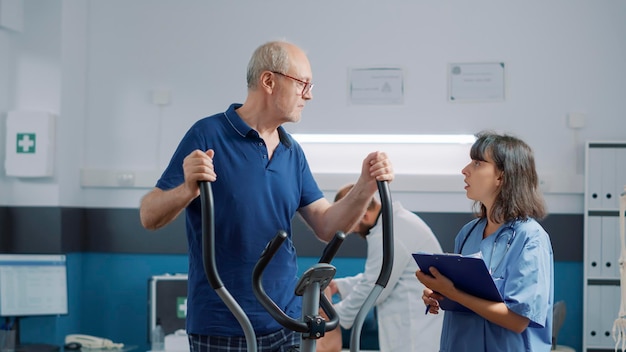Mastering Urgency: Top-Notch Aged Care Emergency Training Program
In the realm of aged care, where the well-being of vulnerable elderly residents is paramount, the mastery of urgency is a critical aspect of ensuring their safety during emergencies. As the global population ages, the demand for top-notch aged care emergency preparedness programs has never been more pressing. This article delves into the key elements and strategies involved in mastering urgency within the context of aged care facilities.
We will explore the unique challenges posed by emergencies in such environments, the regulatory imperatives driving the need for robust preparedness, and the components that constitute a top-notch emergency response program. From comprehensive risk assessments to the integration of cutting-edge technologies, this exploration aims to shed light on how aged care providers can effectively navigate and respond to crises, ensuring the highest level of safety and care for their residents.
In a world where unforeseen events can have severe consequences, aged care facilities stand as the guardians of a particularly vulnerable population. Understanding the urgency associated with emergency situations and possessing the skills to navigate them efficiently is not just a matter of compliance with regulations; it is a moral imperative. The introduction sets the stage for an in-depth exploration of the multifaceted nature of mastering urgency in aged care emergency preparedness, emphasizing the need for a tailored and dynamic approach to meet the specific challenges of this unique healthcare setting.
Understanding the Urgency
The Vulnerability of Aging Populations
Aged care facilities house a demographic that is particularly vulnerable during emergencies. Factors such as limited mobility, chronic health conditions, and cognitive impairments make elderly residents more susceptible to the impacts of disasters. As a result, it becomes imperative for aged care providers to develop and implement effective emergency preparedness programs that address the specific needs of this population.

Regulatory Imperatives
Regulatory bodies recognize the vulnerability of aged care residents and have set stringent standards for emergency preparedness in such facilities. Compliance with these regulations is not only a legal requirement but also essential for maintaining the trust of residents, their families, and the broader community. Aged care providers must stay abreast of evolving regulatory frameworks to ensure their emergency preparedness programs meet the latest standards.
Components of a Top-notch Aged Care Emergency Preparedness Program
Risk Assessment
Before creating an emergency preparedness program, it is essential to conduct a thorough risk assessment. Identify potential hazards, considering the geographical location, climate, and prevalent health issues. This assessment forms the foundation for tailoring the program to the specific needs of the aged care facility.
Customized Evacuation Plans
Not all emergencies require the same response. Customized evacuation plans must be developed based on the type of emergency, whether it be a fire, flood, or health pandemic. Consideration should be given to the mobility of residents, accessibility of exits, and coordination with local emergency services.
Communication Protocols
Effective communication is paramount during emergencies. Establish clear communication protocols that include multiple channels, such as intercom systems, mobile alerts, and designated personnel for relaying information. Regular drills and training sessions ensure that both staff and residents are familiar with the communication procedures.
Medical Emergency Preparedness
Aged care facilities often house residents with various medical conditions. A robust emergency preparedness program should include provisions for medical emergencies. This involves having well-equipped medical stations, trained medical staff, and a clear protocol for contacting external medical services.
Staff Training and Education
The effectiveness of any emergency preparedness program lies in the preparedness of the staff. Regular training sessions should cover evacuation procedures, first aid, communication protocols, and specific responses to different types of emergencies. Continuous education ensures that staff members are up-to-date with the latest safety protocols.
Collaborative Partnerships
Emergency situations often require collaborative efforts. Aged care facilities should establish partnerships with local emergency services, hospitals, and community organizations. These collaborations enhance the support network available during crises and facilitate a more coordinated response.

Implementation and Testing
- Regular Drills: Conduct frequent emergency drills to test the responsiveness of both staff and residents, ensuring everyone is familiar with evacuation procedures and communication protocols.
- Simulations: Integrate realistic emergency simulations that mimic various scenarios, allowing staff to practice their roles and assess the efficiency of the emergency preparedness program.
- Feedback Mechanism: Establish a feedback system to gather insights from participants after each drill or simulation, facilitating continuous improvement based on real-time observations and experiences.
- Identify Gaps: Use drills as opportunities to identify any gaps or shortcomings in the emergency preparedness plan, enabling prompt adjustments and enhancements.
- Staff Training Evaluation: Assess the effectiveness of staff training by monitoring their response times, adherence to protocols, and overall competence during simulated emergency situations.
- Communication Systems Check: Regularly test all communication systems, including intercoms and mobile alerts, to ensure they are functional and capable of disseminating timely information during emergencies.
Technological Advancements in Aged Care Emergency Preparedness
Integration of Smart Technologies
In the age of digital innovation, smart technologies play a crucial role in enhancing emergency preparedness. Aged care facilities can leverage sensors, monitoring devices, and communication platforms to streamline response efforts. For instance, automated alert systems can notify staff instantly in the event of a fire or other emergencies, allowing for a quicker and more coordinated response.
Telehealth Solutions
Telehealth solutions have become increasingly relevant in aged care emergency preparedness. During crises, access to healthcare professionals may be limited, making telehealth an invaluable tool for remote consultations. Integrating telehealth into emergency response plans ensures that residents receive timely medical attention, even in situations where physical access to healthcare providers is challenging.
The Role of Artificial Intelligence
Artificial Intelligence (AI) has the potential to revolutionize aged care emergency preparedness. Machine learning algorithms can analyze data to predict potential risks and optimize response strategies. AI-powered monitoring systems can also detect abnormalities in residents' health parameters, enabling early intervention in emergency situations. As technology continues to advance, incorporating AI into aged care emergency preparedness programs will become increasingly essential. Click here for more such details.
